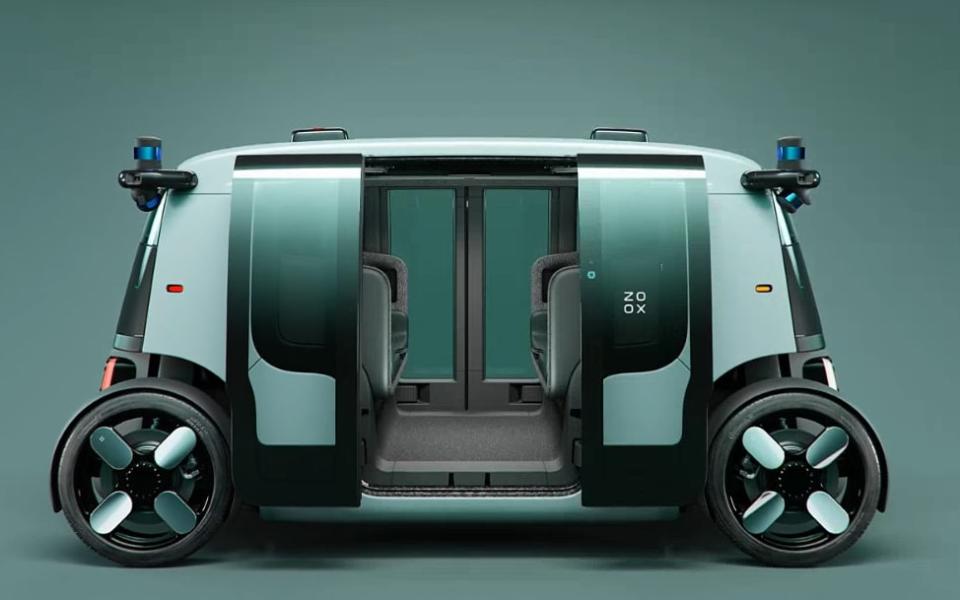Amazon's Zoox reveals electric robotaxi with no steering wheel

Zoox , the self-driving startup owned by Amazon, has unveiled a fully self-driving electric car with no steering wheel that can drive day and night on a single charge.
The self-driving “carriage-style” vehicle seats up to four people and measures just under 12 feet long - about a foot shorter than a standard Mini Cooper.
It features a central, sliding door and can sit passengers facing either direction. It has no steering wheel, pedals or mirrors and there is no way for the driver to manually take over the vehicle.
With a motor at each end, it travels in either direction and maxes out at 75 miles per hour.
The company, which was acquired by Amazon earlier this year in an estimated $1bn (£750m) deal, said two battery packs, one under each row of seats, generate enough juice for 16 hours of run time before recharging
Aicha Evans, Zoox chief executive, told Bloomberg the car would initially work as a ride-hailing service. Passengers would download an app and request a ride, which would pick them up and take them to their destination.
She added the vehicle could ultimately also be used for package delivery, tying in to Amazon's vast e-commerce empire. Ms Evans said: “First we are going to move people around, that is where the demand is. But yes, if we can move people at some point we could move packages.”
She said a public launch was not expected “next year”. It is currently testing its cars in Las Vegas and San Francisco.
One autonomous vehicle. Six years in the making. Join us as we kick off reveal week with a live YouTube watch party. Tomorrow at 9 a.m. PST / 12 p.m. EST. #ThisIsZoox pic.twitter.com/S9twFls7m0
— Zoox (@zoox) December 13, 2020
Amazon’s acquisition of Zoox hailed its entry into the driverless cars space, putting it into competition with Google’s Waymo.
But the Silicon Valley race to launch driverless cars around the world has been stuck in the slow lane. So far, it is possible to hail a Google driverless car in a suburb of Phoenix, Arizona. But road conditions and weather make for uncomplicated, short trips.
Uber, meanwhile, had been another front runner in driverless cars, but sold its cashburning operation earlier this month for approximately $4bn and shut down its own research.
